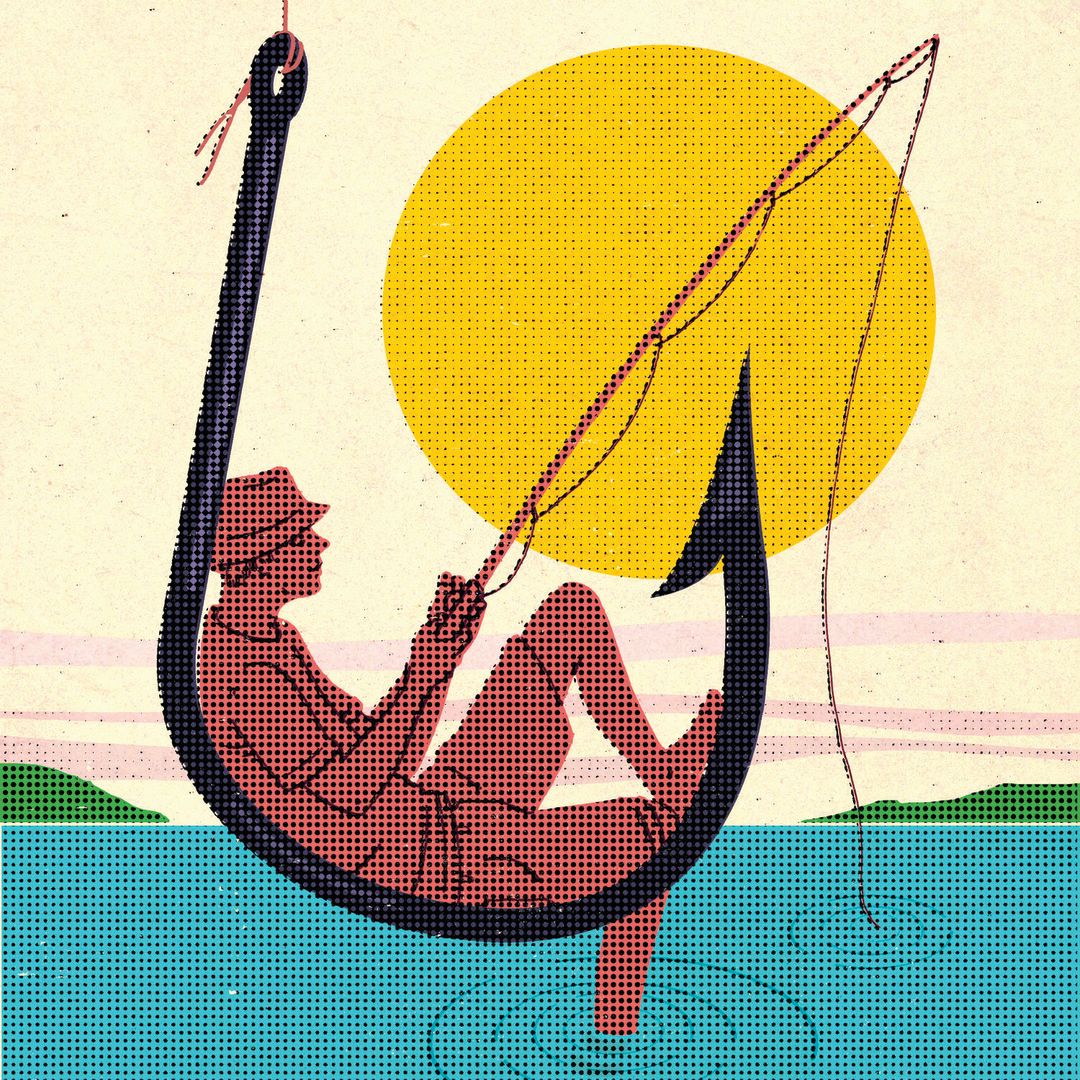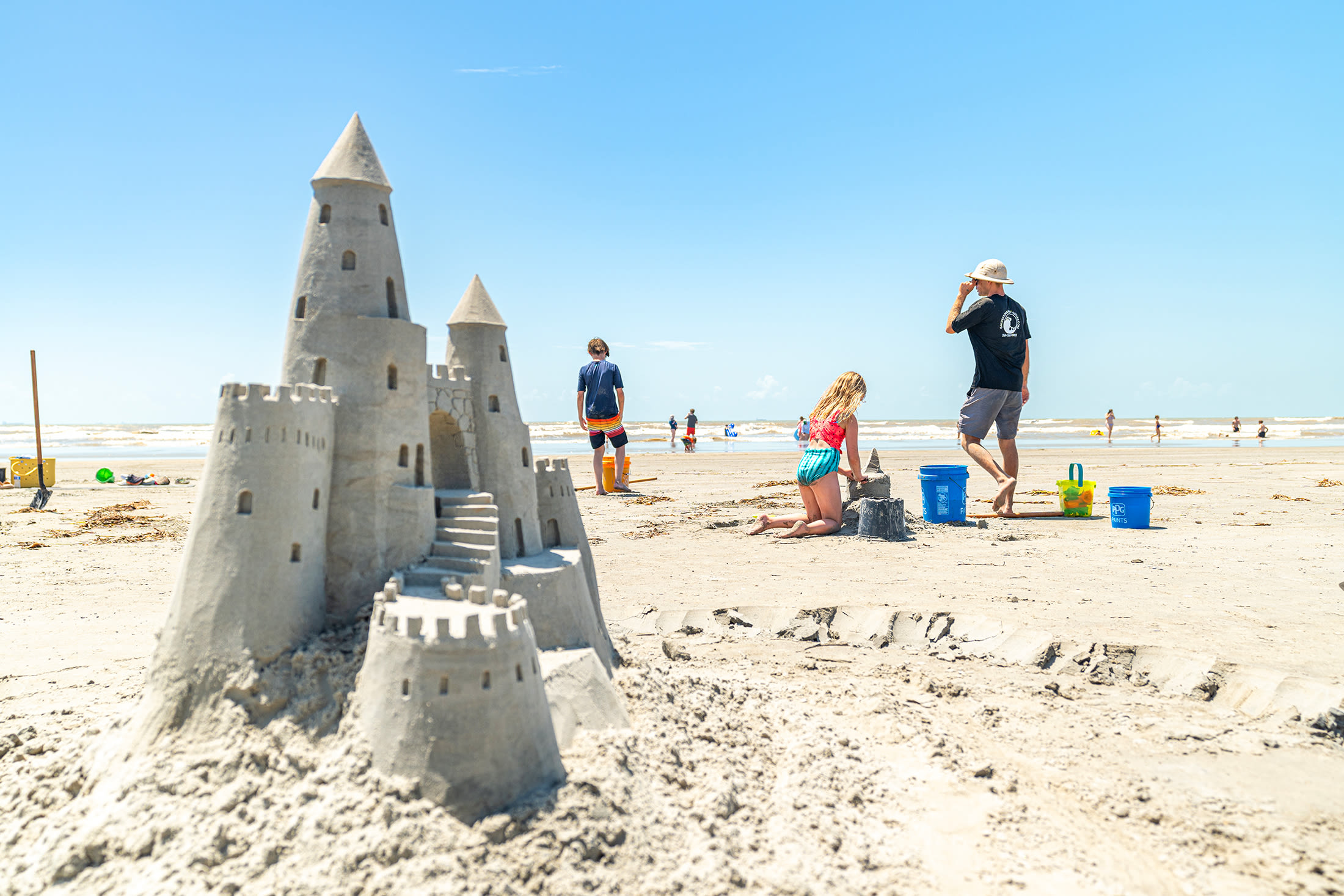Hooked: Green Water All the Way to Galveston Beach

Image: Dan Page
Waist-deep in clear green saltwater, I watched the orange sun come up out of the Gulf of Mexico. A school of mullet swam straight toward me, riding inside a gentle wave. I cast a white Heddon Super Spook lure out as far as I could, trying to put it in front of the speckled seatrout that were sure to be chasing the bait fish. Farther out, past the third sandbar, a pod of dolphins played tag.
It’s one thing to appreciate nature, but being subsumed in it is something else entirely. That morning of surfcasting was as close as I’ve come to a religious experience in a long, long time.
Our decision to move from the West Houston suburbs to Galveston makes perfect sense to my wife and me, but remains difficult to explain to friends and family. For several years, we’d been looking for a house with a big yard where the kids could run around, and since we both work from home, the outlying areas seemed feasible. We visited properties in Brenham, Richmond and Fresno, but none of these small towns seemed like a fit. Then we started looking around Galveston and, instantly, felt at home.
The town’s extremely diverse population includes a high percentage of artists, fishermen, beachcombers and beer connoisseurs—our kind of people. There’s also plenty of local culture: a healthy art scene, an opera house built in the 1800s and one of the nation’s oldest Mardi Gras celebrations.
In May of last year, we bought an amazing, surprisingly affordable 1926 red-brick Arts & Crafts–style house with a green-ceramic-tile roof and original woodwork on the island’s historic East End. We couldn’t be happier, though our lives have changed dramatically, in ways both predictable and unexpected.
The adjustment process began with the inevitable comparisons. Galveston has a lot more historic buildings than Houston, and a lot fewer Chinese restaurants. The weather is balmier; the air, salty. Many houses are up on stilts, a constant reminder that, sometimes, the island goes under water. Then there are the resort-town trade-offs—lots of beautiful beaches to choose from, but not much in the way of grocery stores.
Driving 20 minutes to the bank, a meeting or a lunch date in Midtown or the Heights was an everyday occurrence when I lived in West Houston; these days, an outing to the mainland seems like a forbidding trek. Houston has a web of highways; Galveston has one Causeway bridge that leads to I-45. I’ve tried to avoid succumbing to island mentality, but I’m afraid it’s inevitable.
“The longer you live on the island, the farther away the Causeway gets,” a longtime resident confided. When I tried to pay the guy who cuts my lawn with a Wells Fargo check, he told me he didn’t take checks from out-of-town banks—the nearest Wells Fargo branch is off island, as we say down here. I found myself sympathizing.
I’ve had to educate myself on local lingo. Galveston’s BOI (born on the island) families have lived here for generations—and they categorize the rest of us under various headings, including tourists, vacation-home visitors and recent arrivals. When a local referred to me on Twitter as IBC, I had to look it up in an internet slang dictionary. “Inadequate But Cute” was the definition I found. “No, silly,” she said when I asked her about it. “Around here, IBC means Islander by Choice.” (I think I prefer Inadequate But Cute.)
It didn’t take a crystal ball to guess that I’d be spending a lot of time at the beach, drinking more beer and making fewer trips to downtown Houston once I moved to Galveston. But I didn’t anticipate the sudden intense connection I’d come to have with the saltwater. Soon after we moved in, some friends from Houston rented a beach house on the West End of the island, and we paid them a visit. William, a lawyer with a passion for fishing, was griping that the surfcasting conditions weren’t very good that weekend.
“You are so lucky you live here,” he said, regarding me intently at the dinner table.
“I am?” I asked.
“On Monday and Tuesday, there’s going to be a southeast breeze and green water all the way to the beach,” he said. “You could get up at 6 a.m., go surfcasting in perfect water for two hours, and be back home before your wife gets out of bed.” In the past, I’d planned my fishing excursions around vacations to the coast. But William’s logic made a lot of sense, now that I lived a few blocks from the beach.
“So how do I do this surfcasting thing?” I asked him. He outfitted me with some plastic minnows, jig heads to put them on, a spinning silver spoon lure, and a topwater plug. Then he gave me some advice: Put the fish you catch on a stringer dangling from a float loosely attached to your pocket—that way, if a shark steals your fish, he won’t take you with them. When you’re out there mingling with the bait fish, he reminded me, you’re part of the food chain.
I didn’t catch any fish the first time, but it was so exhilarating, I didn’t really care. After a few more sunrises in the surf, I brought home some nice-size specks for dinner. Suddenly, I found myself studying the marine forecast every night before I went to bed. If the conditions were right, I leapt out of bed at 5 a.m. and headed for the beach.
Sadly, the green water thing didn’t last very long. There are probably only a few weeks a year when the conditions are that perfect. But I was, if you will, hooked. I had some luck fishing from a friend’s private dock, I took the kids to a fishing pier, and I kept looking longingly out over the shimmering Galveston Bay, whose shallow waters are great for fishing much of the year.
By October, I’d bought a fishing boat—the first boat I’ve owned in my life. It’s a 30-year-old Majek RFL (which stands for “red fish line”), known in fishing circles as a potato chip, or a skinny water boat, because the draft is less than a foot. After outfitting it with a new motor and doing some other repairs, I managed to get it into the water by November, just in time for the best flounder season in years. But after a half dozen such trips, I came to realize that catching fish wasn’t really the point.
The 600 square miles of Galveston Bay stretch out from Chocolate Bay and San Luis Pass in the west, east to the Bolivar Peninsula and north all the way to Trinity Bay. Even though I’ll probably never venture more than an hour’s ride from my boat slip, it’s a wonderful feeling to look at a nautical chart and daydream about exploring all those coves and backwaters. A whole new world has opened up to me.
I’ve come to see the place where I live differently. Galveston wasn’t settled by explorers in minivans and pickup trucks. The island grew up around its remarkable sheltered harbor, and the waterfront remains the focus of much of the island’s commerce. My little fishing boat puts me right in the middle of what’s going on. On my last trip, a Coast Guard patrol boat made me change course to allow a gleaming-white, 10-story cruise ship out into the channel. You don’t see that sort of thing on I-45.
The water has set me free. Not only am I plugged into the natural world, I have a new mobility that isn’t dependent on highway traffic. It’s liberating to know I can hop in my boat and take off on an adventure anytime I feel like it—weather permitting, of course.




